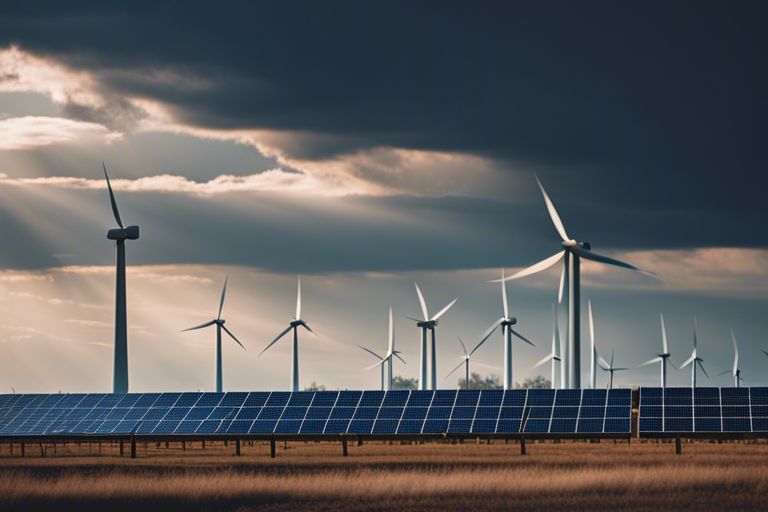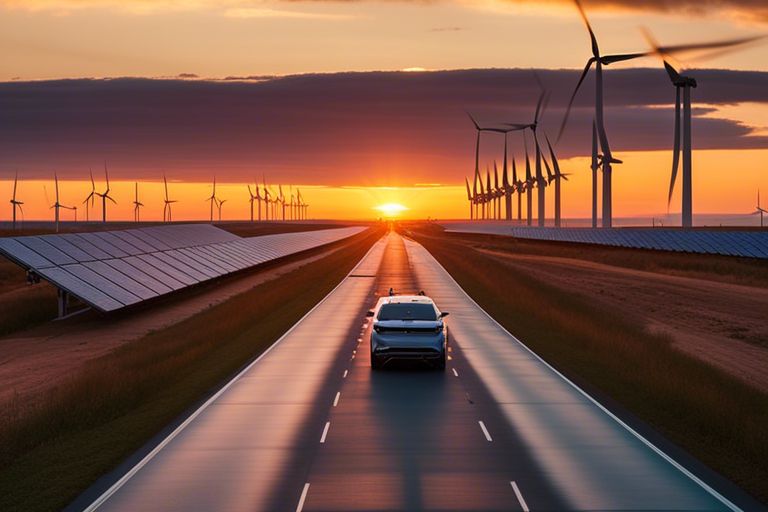Many are curious about how Oklahoma, known for its reliance on coal for electricity generation, will navigate the transition towards renewable energy sources in the future. As the state faces increasing pressure to reduce carbon emissions and embrace cleaner energy alternatives, the delicate balance between coal-fired power plants and solar or wind energy becomes crucial. Understanding the challenges and opportunities in this shift is necessary for ensuring a sustainable and environmentally conscious future for Oklahoma’s energy sector.

Key Takeaways:
- Oklahoma’s shift towards renewables: Oklahoma has been increasing its investment in renewable energy sources like wind and solar to reduce its reliance on coal for electricity generation.
- Challenges in balancing coal and renewables: Balancing electricity generation between coal and renewables poses challenges in terms of grid reliability, energy storage, and infrastructure upgrades.
- Policy and environment impact: Government policies and environmental regulations play a significant role in shaping Oklahoma’s energy mix and the transition towards cleaner energy sources.
- Economic considerations: Economics also play a crucial role in deciding the balance between coal and renewables, with factors like cost-effectiveness and job creation influencing the transition.
- Collaboration for a sustainable future: Collaboration between stakeholders, including energy companies, policymakers, and the community, is vital to achieve a balanced and sustainable electricity generation mix in Oklahoma.
The Role of Coal in Oklahoma’s Energy Mix
Historical Significance and Present Scenario
Some of Oklahoma’s earliest power plants were powered by coal, highlighting the historical significance of the fossil fuel in the state’s energy mix. However, as the world transitions towards cleaner energy sources, the role of coal in Oklahoma’s electricity generation has been evolving.
Challenges and Opportunities for Coal in the Transition Period
On the flip side, coal faces challenges in the form of stricter environmental regulations, declining cost competitiveness with renewable energy sources like wind and solar, and public demand for cleaner energy options. However, one cannot overlook the opportunities that still exist for coal in Oklahoma during this transition period.
Opportunities: Despite the challenges, coal-fired power plants can explore advanced technologies like carbon capture and storage to reduce emissions, potentially extending their operational lifespan. Additionally, Oklahoma’s abundant coal reserves offer energy security and economic benefits for the state, creating potential for innovation and adaptation in the coal industry.
The Growth of Renewables in Oklahoma
Overview of Renewable Energy Resources
One of the fastest-growing sectors in Oklahoma’s energy landscape is renewables. With abundant sunlight and wind resources, the state has a vast potential for solar and wind energy generation. Oklahoma is already a top wind power producer in the country, and the expansion of solar technology is gaining momentum as well.
Policy and Market Factors Influencing Renewable Adoption
Renewable energy adoption in Oklahoma is influenced by a combination of policy and market factors. Policies such as Renewable Portfolio Standards (RPS) and production tax credits have incentivized the growth of renewables in the state. On the market side, the decreasing costs of renewable technologies, coupled with increasing consumer demand for clean energy, have been driving forces behind the shift towards renewables.
- RPS
- Production tax credits
Any decision made to balance electricity generation between coal and renewables in Oklahoma will need to consider how these policy and market factors will continue to shape the energy landscape in the future.

Strategies for Energy Transition
Integrating Renewables with Existing Grid Infrastructure
On the path towards a more sustainable energy future, Oklahoma must carefully consider how to integrate renewable energy sources with its existing grid infrastructure. This involves upgrading transmission lines, implementing advanced grid management technologies, and developing energy storage solutions to ensure a seamless transition without compromising grid reliability.
Economic and Regulatory Considerations for a Balanced Approach
ApproachEconomic and regulatory considerations play a crucial role in achieving a balanced energy generation mix in Oklahoma. Striking the right balance between the economic viability of coal-based generation and the growing competitiveness of renewables requires thoughtful planning and policy decisions. Regulatory frameworks need to incentivize the adoption of renewable technologies while ensuring a fair playing field for all energy sources.
Renewables hold the key to a sustainable energy future for Oklahoma. Embracing renewables offers the state a chance to reduce greenhouse gas emissions, diversify its energy portfolio, and create new job opportunities in the clean energy sector. However, the transition must be managed carefully to mitigate potential grid instability and ensure a smooth and cost-effective shift towards a cleaner energy mix.
Future Perspectives
Innovations in Energy Storage and Management
Despite the prevalent use of coal in Oklahoma’s electricity generation, the future holds promising opportunities for a more balanced approach with renewables. Innovations in energy storage and management technologies are revolutionizing the way electricity grids operate. With advancements in battery storage capabilities and smart grid technologies, renewable sources such as wind and solar can provide a more reliable and consistent source of power, even when the sun isn’t shining or the wind isn’t blowing.
The Role of Public Perception and Community Involvement
With the shift towards renewable energy sources, public perception and community involvement play a critical role in shaping the future of Oklahoma’s electricity generation. Public support for renewable energy initiatives is important for policymakers and utility companies to transition away from coal. Engaging with communities to educate them on the benefits of clean energy and involving them in the decision-making process can help garner support for a more sustainable energy future.
Summing up
Ultimately, Oklahoma will need to strike a careful balance between coal and renewable energy sources to meet its electricity generation needs in the future. While coal has long been a staple in the state’s energy mix, increasing concerns about environmental impact and the growing competitiveness of renewable options such as wind and solar power are shifting the landscape. Policymakers, industry stakeholders, and consumers will need to work together to navigate this transition, ensuring a reliable and sustainable energy future for Oklahoma.
FAQ
Q: What is the current electricity generation mix in Oklahoma?
A: As of now, Oklahoma relies heavily on coal for its electricity generation, accounting for a significant portion of the state’s energy mix.
Q: Why is there a need to balance electricity generation between coal and renewables in Oklahoma?
A: Balancing electricity generation between coal and renewables is crucial in Oklahoma to reduce greenhouse gas emissions, increase energy efficiency, and diversify the state’s energy sources.
Q: What renewable energy sources are prominent in Oklahoma?
A: Oklahoma has vast potential for wind energy production, making it a key player in renewable energy generation. Solar power is also gaining momentum in the state.
Q: How does Oklahoma plan to increase renewable energy generation while maintaining coal power plants?
A: Oklahoma aims to gradually increase its renewable energy capacity by investing in wind and solar farms while improving the efficiency of existing coal power plants through technological upgrades.
Q: What are the challenges faced in balancing electricity generation between coal and renewables in Oklahoma?
A: Some challenges include the intermittency of renewable energy sources, the need for storage solutions, and the dependence on coal power plants for baseload electricity supply.
Q: What policies are in place to support the transition towards a more balanced electricity generation mix in Oklahoma?
A: Oklahoma has implemented renewable energy incentives, energy efficiency programs, and emission reduction targets to encourage the shift towards a more sustainable energy future.
Q: What are the benefits of balancing electricity generation between coal and renewables in Oklahoma?
A: By achieving a balance between coal and renewables, Oklahoma can reduce its carbon footprint, enhance energy security, create job opportunities in the clean energy sector, and improve public health outcomes.




